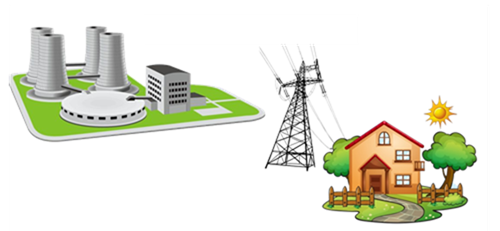18 February 2015
What is the “Cloud” all about?
Over the last few years Cloud technology has really taken off among small businesses. Most businesses now make use of it in one form or another. However, there is still some confusion, because the Cloud is often inaccurately referred to as a single entity or product, rather than the very broad range of technology that it actually represents. Sometimes it is described in a way that makes it sound like an invisible, self-powered entity beyond the comprehension of "normal" people.
In this article, we hope to deliver some much needed Cloud clarity, explaining exactly what it is, along with some important things to consider when choosing a Cloud provider.
Why Cloud confusion?

Cloud technologies have existed since the 1950's. However, only in recent years have computer, mobile, broadband and 4G technologies made possible the Cloud products, services and solutions that we have today. And while early Cloud technology was limited to large enterprises, today's Cloud is available to everyone.
Much of Cloud technology's history is irrelevant to modern small businesses and individuals, but this hasn't deterred the industry and the media from using historic enterprise jargon to describe the technology. Some have taken advantage of, and misused, Cloud terminology to make things sound bigger or better than they really are. Certain brand and product names have popped up using the word 'cloud' when they have little or nothing to do with Cloud technology. Often Cloud is described as 'anything on the internet', which is also misleading. The traditional revenue streams of some small business IT providers can be threatened by Cloud technologies. This has led to some resistance, resulting in some negative and misleading press from these channels.
The 'cloud' name itself has caused confusion — being itself an abstract representation of third-party services — and so appears vague and rather mysterious.
Considering all of these factors, it's no wonder that there is so much Cloud confusion.
Cloud is a utility

Before the national grid, those who wanted electricity had to buy and maintain their own generators and be sure they could meet their needs during peak times.
These days, we expect electricity to be available on tap. We just pay for its delivery and for what we use. We do not own or rent the power station. Cloud solutions are very similar.
Traditionally, if we wanted business-class email, document management, back-up, security, web hosting, conferencing and many other services, we had to install one or more servers or devices, often in our own offices. We had to resource the staff to maintain and support them.
By using Cloud services we can have all of these things on tap — the Cloud service provides the products, service, maintenance and security — and we pay only for what we use.
Cloud services give us access to many more tools and resources, at the same time reducing our need for IT support and maintenance. By having our services hosted externally we can also work from anywhere without being tied to the office. And Cloud technology can lower our costs, while increasing security and mobility. In short, we can now work more flexibly and dynamically than ever before.
What is the Cloud made of?

In simple terms Cloud services consist typically of a large stack of computers and special hardware and software to manage them.
The computers are linked together to provide an almost infinite number of resources. Simple tasks might be carried out on one computer or spread over many. Applications can be scaled up to support a massive number of users, or scaled down as required. Cloud technology removes the limitations of hardware by pooling resources in a way that is transparent to those using them. This is sometimes referred to as 'elasticity' or 'elastic computing'.
Large-scale Cloud infrastructure is typically arranged in huge data centres, some the size of multiple football pitches, like the Microsoft one pictured above. This Microsoft data centre is almost entirely autonomous and incredibly secure, with automatic replication and 'self-healing' capabilities.
The Cloud does all the hard work, while we usually receive the results via the internet. The Cloud is not just 'anything on the internet'. A cloud can just as easily be private, without any internet connection whatsoever — you could build a small private one in your spare bedroom if you so desired! An internet connection is what usually connects us to the Cloud, but is not the Cloud itself.
Today, Cloud technology, together with broadband, 4G, mobile devices and modern PCs, allows individuals and businesses to benefit from services that were previously only available to large enterprises.
We can now all enjoy improved efficiency, reduced costs, reduced maintenance and better security.
Good Cloud, bad Cloud

Unfortunately, as in all industries, there are the good, the bad and the ugly! It makes sense to be selective, even if you make just a partial move to the Cloud.
Consider the following:
- What are the provider's motives and objectives?
- To what official security standards do they conform?
- Who has access to your data and how is it managed?
- What hardware and software platforms do they support?
- What is their up-time promise and historic performance?
- What compensation is available should things go wrong?
- How does the provider manage changes that may impact you?
- Where geographically would your data be stored and whose laws apply?
- Is the provider clear, open and honest about all of the above? If not, why not?
Don't be afraid to ask questions. Seek advice and never assume all Cloud services have the same standards! Don't employ a Cloud service if you don't know how and where your data will be handled.
Conclusion
In this article, I have touched on this history of cloud technology, described briefly what it is and how it works. I have also touched on things to consider when choosing a cloud provider.
In a second article - "Why do we need the Cloud?" - I will discuss trends over the last decade that have led to where we are today, why we need cloud technology and what the business benefits are along with what can be achieved with the cloud.
This article was written by Steve and Christine Munden of iBizify.net Ltd – an independent provider of cloud solutions and services, bespoke software, web and mobile development.
Blog
- Don’t get phished!
- How to set up Microsoft Authenticator
- Understanding your Microsoft 365 email quarantine
- Development and consultancy hours - simplified
- We have a new logo
- We have moved
- What to look for in a PC for your small business
- Why you should get to know Microsoft Teams
- Making a splash with Acorn Commercials
- Case study: Tavistock House Dental Practice
- Steve raised over £685 for Marie Curie
- SEO, Spam, Cowboys & Indians
- What is the “Cloud” all about?
- Why do we need the Cloud?
- Learning to be a regular Tippler
- Are you a Binger, Regular Tippler or Abstainer?
- What are ‘hits’? (web analytics and statistics)